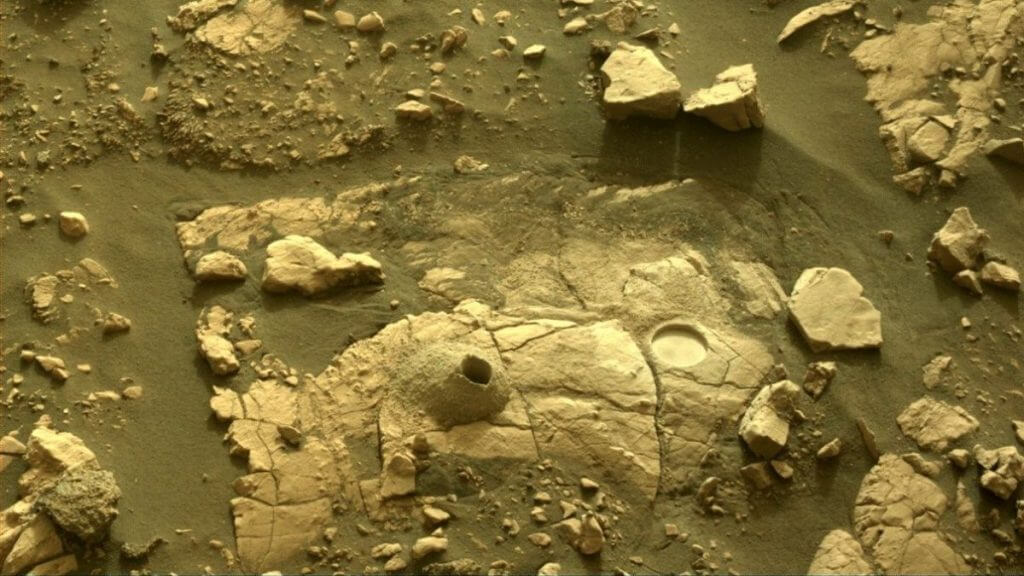NASA’s Perseverance rover has grabbed another rock that may contain clues as to whether there was life on Mars.
Officials with the Mars mission announced the milestone briefly Monday (Aug. 1) on Twitter, linking the rover’s collection with its future participation in a planned sample-return mission.
“Exciting news: Not only did I recently grab a new rock core (#11), but plans are coming together to bring these samples back to Earth,” the Perseverance rover‘s account tweeted (opens in new tab) Monday.
Related: 12 amazing photos from the Perseverance rover’s 1st year on Mars
NASA has redesigned the Mars sample return mission to make Perseverance the primary sample collection rover, discarding previous plans to use a fetch rover from the European space agency, the agency announced last week. As backup, NASA will task two new helicopters to collect the samples themselves.
Also last week, NASA officials told reporters that the 11th rover sample is a sedimentary rock that might contain biomarkers, or indications of life. Although Perseverance can do preliminary analysis on its samples, it could not tote many instruments with it to Mars, and so scientists are eager to ferry the caches back to Earth for more detailed analysis.
Hence the sample return mission, which is a joint effort of NASA and the European Space Agency (ESA) and is scheduled to launch to the Red Planet in 2028. In the meantime, Perseverance will prepare samples that it collects in Jezero Crater and find a convenient location where the sample return mission could land.
After the sample return mission lands, Perseverance will ferry samples to a small rocket called the Mars Ascent Vehicle (MAV). The rocket will launch the samples to an orbiter that will relay the rocks on to Earth for analysis by scientists.
Perseverance contains 43 test tubes, of which 38 are expected to be filled with samples. The rover team is careful to pick up the most promising examples from the collection area to not waste precious cargo space.
The mission landed on Mars in February 2021 and filled its first tube in September 2021. At the moment, it is examining a river delta that may include past traces of life within the area, according to past briefings with Perseverance officials.
Follow Elizabeth Howell on Twitter @howellspace (opens in new tab). Follow us on Twitter @Spacedotcom (opens in new tab) and on Facebook (opens in new tab).

